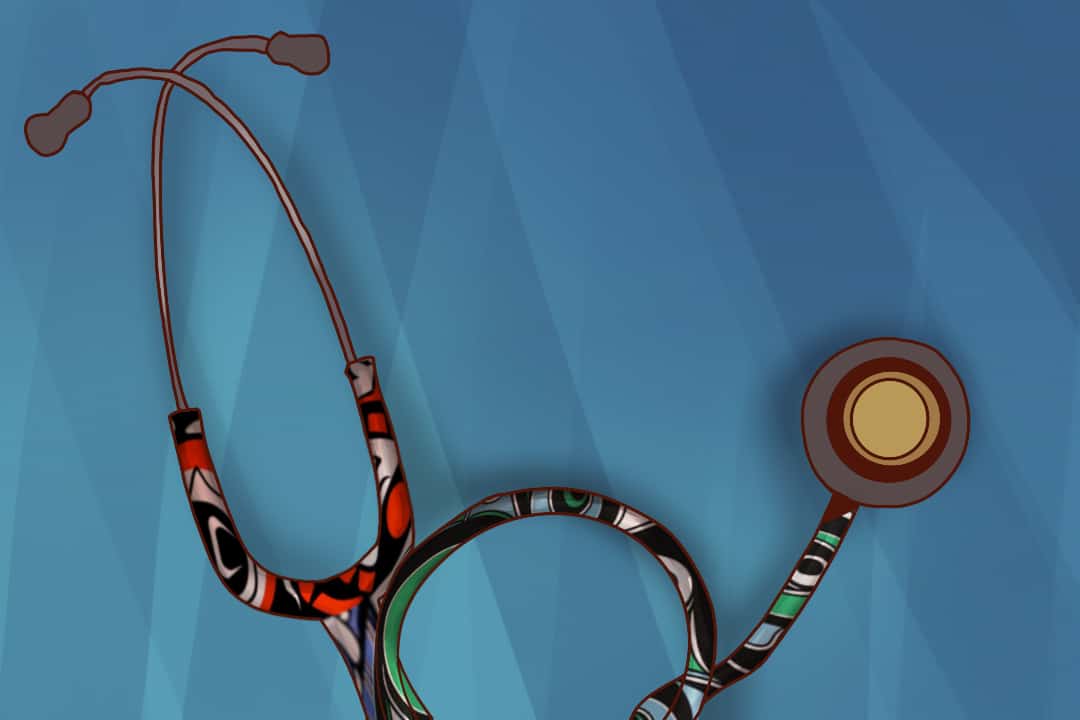Have you ever heard a woman say that she would prefer that her gynecologist be female? Or what about a man saying he’d be more comfortable speaking to a male urologist about his issues with erection or urine flow? I’m sure we’ve all heard this before. Given this, doesn’t it make sense that patients would also feel more at ease with a health-care provider of a similar cultural, regional, or linguistic background?
Let’s consider the landscape of Northern Ontario. The region has half of the province’s total Indigenous population and estimates indicate that between 15 to 25 per cent of individuals living in Northern Ontario identify as Indigenous. The Indigenous population in Canada is also growing at a rate four times faster than the rest of Canada’s total population.
Despite this, Northern Ontarians in general, and individuals from Indigenous communities more specifically, often have to travel the farthest to access primary care; some have little to no access to specialist services in their communities and are at greater risk of several chronic health conditions. Since northern and rural communities are underserved with respect to health services, it is paramount that we begin to have conversations about why this is and how to improve access.
Prior to colonization, many Indigenous communities had their own traditional healers who were familiar with the medicines that nature provided and traditional ceremonies. After colonization, the dominant society forced the traditional healers into hiding, and so began the process of eradicating much of the Indigenous healing knowledge. Moreover, Indigenous peoples were forced away from their traditional lands and often relocated to more rural and remote areas of northern Ontario. This gave colonizers the power to hold and distribute medical knowledge.
Today, many Indigenous peoples are open to both traditional and modern medicine, but there is a lack of access to primary health-care providers in many rural and northern areas of the province, including Indigenous communities.
The challenges faced by northern and rural communities have long been known. There are numerous reports that have identified unique access challenges such as availability of health-care services, transportation, a lack of rural perspective at the decision making tables, and a more recent focus on centralizing health-care services.
Researchers have examined the data on how to best attract and retain health-care professionals in underserved communities. One method that has been employed, with mixed results, is to offer financial incentives. New health professional graduates are offered contracts that provide them with financial gain to lure them into working in northern and rural communities. Internationally trained physicians are also given similar incentives along with Canadian citizenship to settle in northern and rural communities. However, this is a short-term solution because many of these physicians do not remain in these communities past their compulsory terms and most are not Indigenous.
Instead, more success has been seen with factors such as candidate selection and rural training programs. Research has demonstrated that students of rural origin and students who have an intention to work in the northern and rural communities, medical facilities located within these geographical areas, and positive training experiences during rural exposures have resulted in greater retention rates.
Hence, would it not make sense to ensure that all health-related programs in Ontario make greater efforts to recruit Indigenous students who have a desire to work in their home communities? However, many Indigenous students have varying socioeconomic, cultural, and background experiences that makes gaining entry to competitive programs difficult. Other potential barriers these students face in attending these schools include leaving their family and home community, amongst others.
In our current health-care professional shortage, many established medical schools have been given government funding to increase their capacity for students in health-care programs. For instance, last March, the Ontario government announced that it was adding 160 undergraduate seats over the next five years, but only 30 of these go to the Northern Ontario School of Medicine (NOSM). In other words, just under 19 per cent of new seats are allocated to the most underserved areas of the province. Furthermore, NOSM only dedicates a minimum of four seats per year for Indigenous students with significant living experience in Northern Ontario. This is not what is best for Indigenous communities from the north, who are our most underserved with respect to health care.
To address the shortage of health-care professionals providing meaningful care in Indigenous communities, we can’t simply increase technological capacity for online access to health professionals and while also continuing to endure the financial burden of travelling to medical clinics from rural and remote communities.
Indigenous partners, such as the National Consortium for Indigenous Education, need a space at the table to change how the current education system is organized so that it can recruit and retain more Indigenous students in health-care programs. In line with this, the selection criteria in existing health-care programs need to be modified so that more Indigenous students are admitted. Additionally, the number of health-care programs in northern and rural areas of Ontario need to be increased. Lastly, the existing structure of health care in Ontario needs to be changed so that Indigenous peoples have greater self-governance over their health.
Angie Hunda is a first-year student in the Physician Assistant program at the Temerty Faculty of Medicine.


